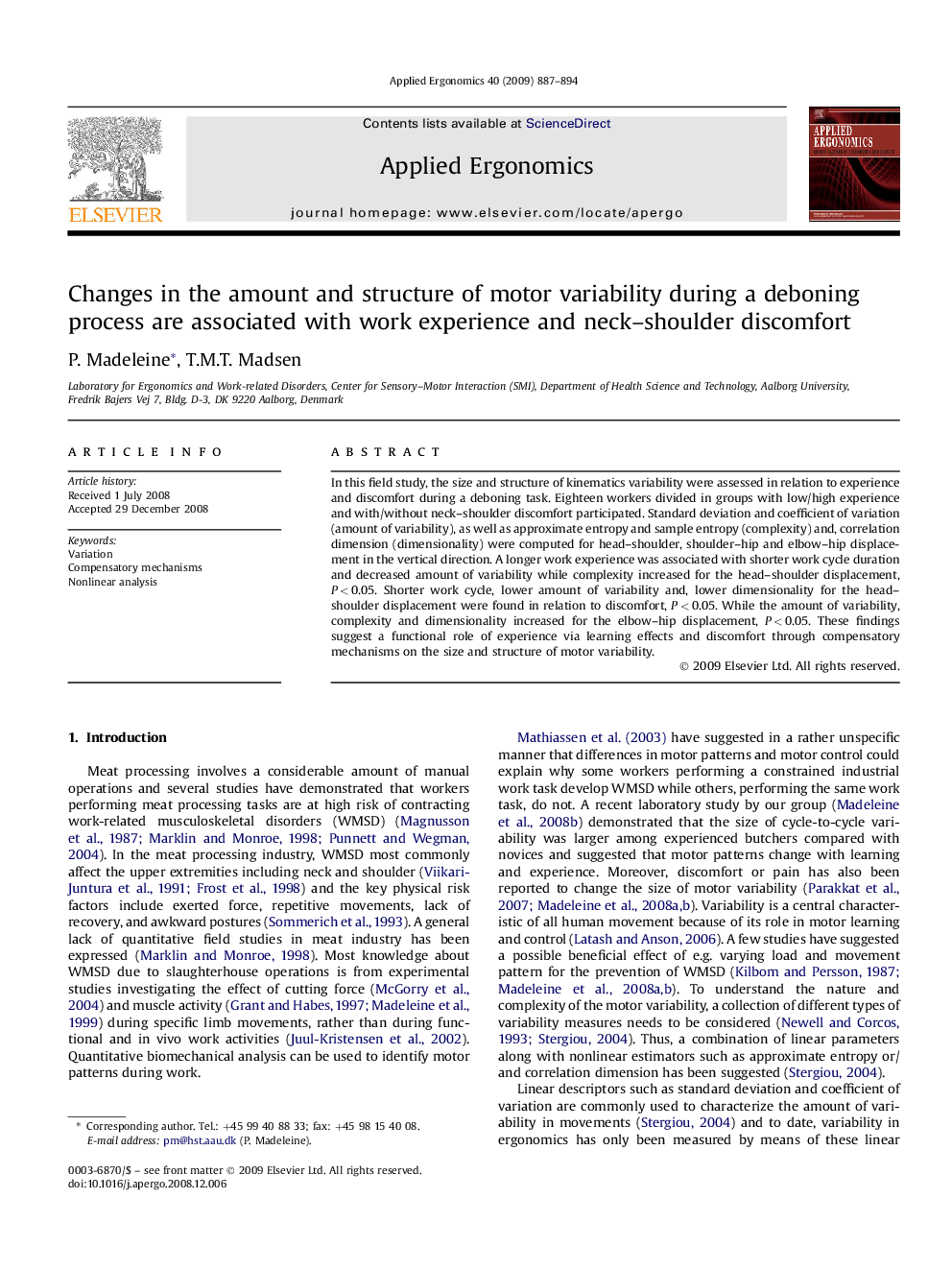| Article ID | Journal | Published Year | Pages | File Type |
|---|---|---|---|---|
| 550262 | Applied Ergonomics | 2009 | 8 Pages |
In this field study, the size and structure of kinematics variability were assessed in relation to experience and discomfort during a deboning task. Eighteen workers divided in groups with low/high experience and with/without neck–shoulder discomfort participated. Standard deviation and coefficient of variation (amount of variability), as well as approximate entropy and sample entropy (complexity) and, correlation dimension (dimensionality) were computed for head–shoulder, shoulder–hip and elbow–hip displacement in the vertical direction. A longer work experience was associated with shorter work cycle duration and decreased amount of variability while complexity increased for the head–shoulder displacement, P < 0.05. Shorter work cycle, lower amount of variability and, lower dimensionality for the head–shoulder displacement were found in relation to discomfort, P < 0.05. While the amount of variability, complexity and dimensionality increased for the elbow–hip displacement, P < 0.05. These findings suggest a functional role of experience via learning effects and discomfort through compensatory mechanisms on the size and structure of motor variability.
